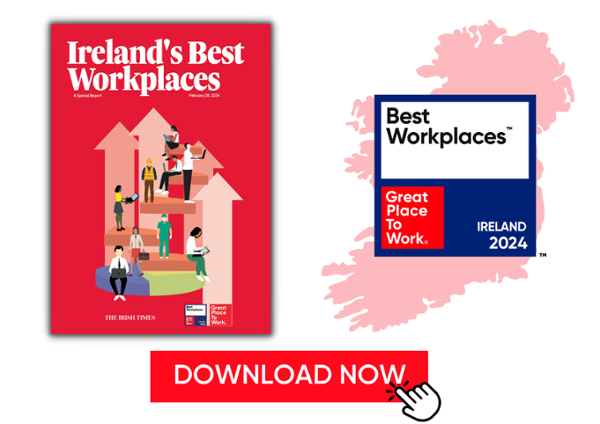COVID-19 forced workplaces to restructure the who, what, where, when and how of working together. Restructuring events are critical moments that can either exacerbate or reduce inequity. Businesses that have leaders with an open mind and who are receptive to change will be able to distinguish themselves as employers of choice during this transition period and beyond.
At the same time, employees are torn between a strong desire for more flexible work and an equally strong desire for the collaboration of in-person work. While the hybrid workplace and hybrid teams might be viewed as the great compromise of the future, organisations that get this right will have a huge competitive advantage.
Build Trust and Be Inclusive, with Transparent Communication
This is one of the greatest challenges when leading remote individuals and teams. And it’s even more challenging with a hybrid team. To build trust, leaders must treat everyone with respect and fairness.
Remote employees might feel that those in the office have greater access to their leader and to other team members. Those one-on-one meetings that leaders increased during the pandemic should continue, equally, for all team members. And in a team meeting, leaders should seek to establish psychological safety. To do this, leaders need to deliberately include all team members and involve all meeting participants. This will help to create a sense of belonging.
We have seen throughout the pandemic that being open and transparent has been essential in building trust – whether it is communications from health agencies, governments, or employers.
Using communication channels, such as employee surveys and feedback sessions, to understand employees’ concerns and identify potential challenges is a key first step to planning a safe and stress-free transition back to the workplace. You can for example organise live Q&A sessions, each one helmed by a panel of experts – whether from HR, IT, Property, or other parts of the business – to answer colleagues’ questions directly.

Develop a Strong Team Culture
People with managerial responsibilities have a key role to play in a successful transition from remote to office or a hybrid model. They can make sure that important messaging is cascaded and clearly understood, as well as act as a point of contact, able to get clear answers to employee questions or concerns quickly.
During this transition, people leaders should be visible, accessible and responsive. Offering regular one-to-one check-ins throughout the transition is one way to ensure that potential issues are identified quickly, and that individual circumstances can be accommodated in a way that aligns with the needs of a broader team.
Indeed, hybrid teams are often comprised of individuals who have a history of working together. For example, they may have all worked together in the office at one time, or most recently, worked together all completely remote. However, it might be, for some of your employees, the first time they meet their team or even their manager!
The hybrid team is in essence a new team, and leaders can ensure a strong start for their new team by creating a “team charter.” Together, the leader and team members agree about their purpose, accountabilities, goals, and metrics. They also set ground rules for communication and meetings.
Additionally, this is an opportunity to purposely consider ways to keep team members connected. Physical distance should not equate to social and emotional distance. Encourage team members to reach out to each other when they need help. Recognise those who do it. Continue to champion and attend those fun “virtual get togethers” so that all team members feel connected to each other and to you.
Be flexible, patient and empathetic
This transition will be new for everyone. In the spirit of openness and transparency, workplaces should embrace the fact that they don’t have all the answers and approach the change with a learning mindset.
Parents and caregivers may be concerned about the logistics of managing a return to the workplace while childcare arrangements are still complicated. Many workers may also be dreading the return to a long and busy commute. These are all valid concerns that will require some flexibility and patience to work out.
Leaders need to remain vigilant about how employees are feeling about their work, their workload, and their work-life balance. It might be tempting to stop asking employees how they are feeling and to stop taking the time to listen. Don’t do it.
Working on a hybrid team will require all members to adapt in some way. Remote employees might feel they have to work harder and contribute more because they aren’t in the office. Those in the office might work even harder because they are more visible to leadership.
Continue to support those wanting to work from home without creating division
Managing the transition back to the office requires a coordinated effort between different parts of the business, including HR, Property, IT, and Communications. And the transition from remote to the office cannot be managed by focusing only on the shift towards the office – the needs of home and hybrid workers beyond the traditional workplace need to be considered as well.
Making sure that colleagues understand the tools available to help them work effectively at a distance, and making sure that their workplaces at home are set up properly, are important parts of the transition too.
Another important consideration is to ensure that the transition does not create a culture of “us and them” between those who can make it to the office more often than others.
Maintaining an open and honest conversation is also an important aspect of managing different ways of working while underlining the value of all members of the team. Agreeing upon shared goals with transparency about what will be undertaken by who, and where, will facilitate collaboration and productivity.
Flexible and hybrid work needs a listening strategy
Listening to your employees via regular employee surveys will ensure your transition to hybrid is a smooth and meaningful one. Contact us to learn how.

More resources on hybrid working and getting back to the workplace:
About Great Place to Work®
Great Place to Work® is the global authority on workplace culture. We help organisations quantify their culture and produce better business results by creating a high-trust work experience for all employees. We recognise Great Place to Work-Certified™ companies and the Best Workplaces™ in more than 60 countries.
To join the thousands of companies that have committed to building high-trust company cultures that help them attract, retain and take care of their people, contact us about getting Certified today.
